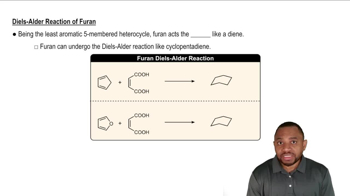Which reagent system (HBr or HBr, H2O2) would you use to carry out the following transformations?
(b)

 Verified step by step guidance
Verified step by step guidance Verified video answer for a similar problem:
Verified video answer for a similar problem:



 1:18m
1:18mMaster Overview of Hydrohalogention. with a bite sized video explanation from Johnny
Start learning